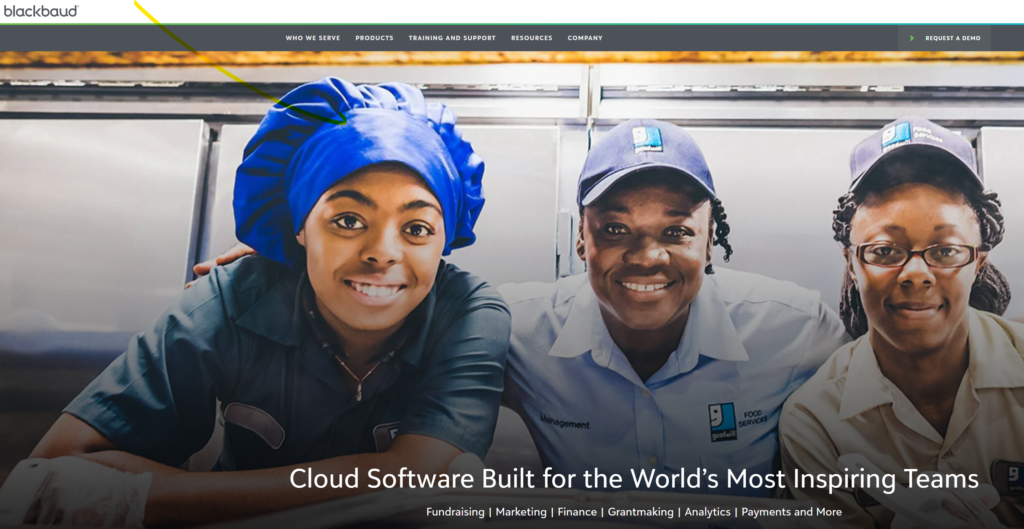The Blackbaud Team Launches 9 New Power Automate Connectors

We’ve been big fans of the Blackbaud connector since it first launched the Blackbaud Raisers Edge NXT connector in April 2020 and Blackbaud Church Management in August 2021. We were excited to see that the team has launched nine new connectors this month.
It’s worth mentioning that Blackbaud has absolutely exceptional documentation on how to use their connectors. We’re talking – the most impressive connector documentation we have seen. Check out the full list of templates and use cases here. If you’re not sure what you can do with it, you’ll have no questions after visiting their documentation! They even offer their own community forum. It’s impressive how dedicated they are to helping their customers.
We were fortunate to interview the author behind the Blackbaud connectors, Ben Lambert – or as we like to refer to him “The Flow Master.”
Our Blackbaud Raiser’s Edge NXT connector had reached a practical size limit and could no longer be deployed through Microsoft’s pipelines. This meant that to release new functionality to Power Platform users, we’d need to do this through a new/different connector. After much discussion, Microsoft recommended that we refactor our connector into smaller, more narrowly-scoped connectors.
We took this as an opportunity to reorganize all of the functionality in our single (product-centric) connector into smaller, more manageable connectors oriented around broad functional domains within our Raiser’s Edge NXT product.
Refactoring our connector meant thinking through the overall information architecture to project an intuitive organization of functionality within the new set of connectors. We worked closely with our corporate Marketing and Brand teams on the naming conventions and icons we used to ensure that customers could easily navigate the functionality across the connectors. The new set of refactored connectors contains all the functionality from our original Blackbaud Raiser’s Edge NXT connector as well as a few new features based on recent enhancements to our underlying APIs.
Would you recommend your current users of the Raisers Edge NXT connector rebuild their flows using the new ones?
A core tenet of our developer platform is the concept of “backwards compatibility.” To preserve compatibility and avoid breaking any existing flows or apps, we won’t remove our existing connector. It will continue to function as it has, with its existing set of actions and capabilities.
Customers can continue using our original connector. There’s no requirement to rebuild or update existing flows or apps to use the new refactored connectors.
Going forward, we’ll continue enhancing the refactored connectors, adding new capabilities, so customers can choose to leverage the new connectors as needed. Since we’ll support both original and new connectors, customers can co-mingle connectors within flows or apps with no problems. Customers can keep using their existing flows and apps, and opt-in to using the refactored connectors over time.

We have a large and growing library of examples created by customers and Blackbaud employees in our Template showcase. These examples include Power Automate flows that perform conditional Word merges for gift acknowledgements, trigger interesting back-office logic when constituent interactions occur, and other common automation scenarios useful to our customers. Other examples use Power Apps to produce mobile experiences for staff who are often “in the field” and need streamlined access to their Blackbaud data.
I’m a big fan of workflow automation as means of modeling an organization’s unique business requirements and processes, many of which may span time and involve multiple people, machines, and other systems. Particularly interesting to me are task-based examples that reduce the surface area for human error by letting “the cloud” manage the workflow and only involve humans when necessary. Workflows can pause and wait for a human to take action, and then continue with branching logic based on the human response.
We plan to incorporate new functionality into our connectors over time, based on customer feedback and enhancements to our core products. This may include new actions in existing connectors, triggers, and even new connectors as part of our product and platform roadmaps.
Connectors are relatively easy to define using OpenAPI, so my advice is to first think deeply about the desired end-user experience within Power Automate (and Power Apps), and then consider how that experience can be delivered through an OpenAPI definition. That definition may map nicely to your backend set of APIs as-is without any modifications, or you can leverage the rich tools in the connector toolset like policies and scripts to map your desired experience to your backend. Your connector doesn’t have to exhibit all of the complexities exposed by your API, it should be a more thoughtfully-curated set of actions that produce the best user experience possible for a “citizen developer.”
- The ability to invoke a Power Automate flow from various pages within our product (where context values from the product are passed as parameters to the flow, making it possible for the flow to operate on the current record being viewed in the product). We also support response messages from the flow that appear as toast notifications in the product, so the end-user who invoked the flow (via a button on the page) can see the results. This is a very powerful feature as it allows our customers to introduce completely custom user-initiated functionality into the core product, using Power Automate as the backend logic for the functionality. All of this can be accomplished without writing a single line of code!
- The ability to embed a Power App into various areas of our product. In a similar low-code/no-code spirit, our customers can craft interesting Power Apps and embed them within our core product contextually bound to the current record being viewed. Our SKY Add-in framework makes it easy to show a Power App as a tile on a page, as a flyout panel or a modal interaction, or even as a full-page user experience. The Power App serves as the front-end UI and can be as simple or as complex as needed, and it can leverage the entire connector ecosystem (including our connectors) for interacting with other systems!
- The ability to embed a Power BI report into various areas of our product. Similar to the Power App example, our customers can create compelling Power BI reports and embed them into various areas of our product (with context provided from our product).

